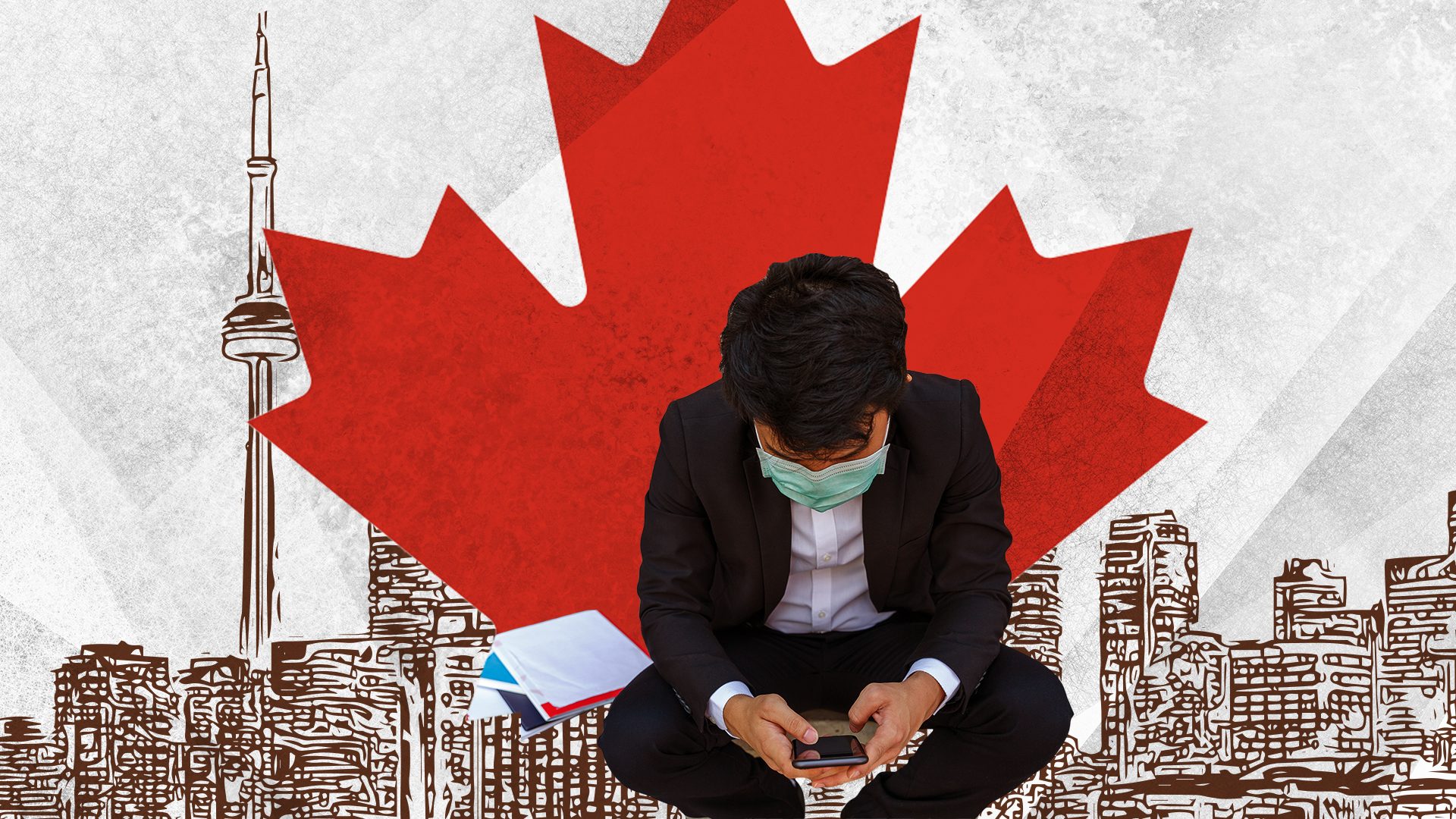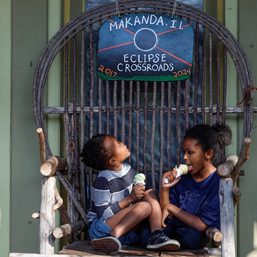SUMMARY
This is AI generated summarization, which may have errors. For context, always refer to the full article.

It’s been nearly two months since he was hired as an assembly line worker in a factory in the north end of Toronto, but Kevin Feliciano is still trying to get used to his new job, which involves a lot of heavy lifting.
Still, said Feliciano, the work may be hard and pays only minimum wage, but at least he’s earning. Back in March, Feliciano had joined one million Canadians who were either temporarily laid off or had their work hours reduced as the country went on lockdown due to the COVID-19 pandemic.
By April, 3.1 million Canadians had applied for the Canada Emergency Response Benefit (CERB). National unemployment rate rose to 13.9% in May, the highest it had been since 1976.
Filipinos and West Asians were among those who reported a higher share of job losses or reduced work hours, at 42% and 47% respectively, compared to 34% among Whites, according to data gathered from a crowdsourcing survey conducted from May 26 to June 8 by Statistics Canada.
While West Asians reported the highest share of job losses or reduced work hours overall, they constitute a smaller population based on the 2016 census – 264,000 compared to more than 837,000 Filipinos.
Before the pandemic, Feliciano, 27, had a full-time job as an audiovisual technician for a global event production company, which assigned him to a hotel downtown. It was his first job after earning a degree in theater production at York University. He had already worked before as a student, but this was a job more in line with his career path. He was content.
By June, Toronto was still on lockdown, and non-essential businesses remained closed. Although Feliciano had been receiving $2,000 in CERB every 4 weeks, it not only wasn’t enough, it was also taxable income. Although he lives with his parents, he was expected to contribute to expenses. His mother, who worked in the hotel industry, had also been laid off.

HOPEFUL. The Feliciano family have lived in Canada for more than 14 years CONTRIBUTED PHOTO
Feliciano said he began looking for work as early as April. By mid-June, he started the 2 pm to 12 am shift at a factory that packaged dried goods. COVID-19 cases in the city were at their peak during this time, so he avoided public transport and instead cycled to and from work, a two-hour commute.
“Nung umpisa, gusto ko na po mag-quit. Lagi akong pagod at masakit ang katawan. But I’ve accepted the reality that there’s a pandemic. Kailangang pagtiyagaan; we need the income,” said Feliciano.
(At the start, I already wanted to quit. I was always tired, and my body ached. But I’ve accepted the reality that there’s a pandemic. I have to make the best out of it; we need the income.)
In early August, Feliciano received the call he had been dreading. He was officially terminated. With the hospitality and tourism industry among the hardest hit by the pandemic, and with indoor gatherings limited to 50 people and big events canceled, his employer was incurring huge losses.
“Naintindihan ko naman po kasi wala naman talagang events (I understand because there really are no events),” he said.
Feliciano is aware that his is not an isolated case. His workmates had also been let go; a number of those employed in the factory were Filipino-Canadians like him who had previous occupations.
Experts say visible minority groups suffered disproportionately during the pandemic because of their employment in the food, hospitality, and other service industries, which were the hardest hit during the lockdown. Filipino-Canadians make up a high proportion of workers in these industries, as well as in health, social services, and manufacturing.
Uncertain times
Self-employed Filipino-Canadians also lost incomes. Essel Valdez, who offers early learning and childcare services licensed by the city from her home had been teaching 4 daycare kids.
“But by March 18 we had to shut down” when a lockdown was imposed in Toronto, she said.
She later joined a training for the safe opening of early learning and childcare services last July, but decided to hold off receiving children until classes open September 8.
“I have 3 kids, two of whom have asthma. I wasn’t ready. I was wary,” she said. “I’m not sure who their (childcare clients) social bubbles are.”
Since her two school-aged children’s classes were canceled during the pandemic, it would have meant having to care for 7 children in her home.
“I had to think about our health and safety. It was a tough decision,” Valdez said.
Reopening also comes with additional costs.
“We have to have two weeks’ supply of PPE (personal protective equipment), masks, face barrier, and gloves, and we have to have proper barriers, hindi puwedeng (it can’t be) do-it-yourself,” she explained.
It also involves changing programming and activities to allow for physical distancing.
“Hindi siya madali (It’s not easy),” she added.
Valdez said she still counts herself lucky because she was able to avail of CERB, and her husband continued to work.
“Buti na lang essential business ang trabaho ng asawa ko (It’s a good thing my husband’s work is considered essential business). Otherwise it would have been hard to survive with 3 kids,” she said.
Asked how she was feeling, she said, “parang nakalutang (I feel lost).”

Apart from all the challenges imposed by COVID-19, her 94-year-old mother, Salud, died in a nursing home in Los Angeles this August. With borders closed between the US and Canada, she and her sister, who lives in Montreal, won’t be able to attend their mother’s funeral.
Both Feliciano and Valdez said they are fortunate that their families don’t live in poverty, and no one is relying on them for economic support back in the Philippines.
In 2017, Filipinos in Canada sent $1.2 billion to family and friends living abroad, more than any other group in the country, according to StatsCan. The World Bank has projected a 13% drop in global remittances to the Philippines this year.
Feliciano said he remains hopeful about the possibility of being rehired by his former employer when the economy recovers.
“I have a good standing in the company. They said I can reapply,” he said.
Valdez, on the other hand, said she worries about the threat of a second wave of COVID-19 infections. It’s the uncertainty that bothers her.
“If there’s an upsurge, we’ll have to shut down again. I’ve already maximized my CERB,” she said.
Should a second wave occur and the government finds itself needing to help out-of-work Canadians once more, Feliciano said he hopes this time around that the support will “match the living standard of where you’re located.”
Right now, all beneficiaries get the same amount regardless of whether they live in an expensive city like Toronto or in a rural area.
Feliciano also mused that since the pandemic has thrown the world’s inequalities into sharp relief, governments need to do more to ensure that gaps are addressed and workers have livable incomes.
“Ang nag-iiral ngayon is profit. Nakakalimutan na ang workforce (Right now, what prevails is profit. The workforce is being forgotten),” he said. – Rappler.com
Add a comment
How does this make you feel?



![[OPINION] Limited intake of international students: Is Canada knee-capping its future?](https://www.rappler.com/tachyon/2024/02/tl-canada-forgeign-student-cap-02232024-2.jpg?resize=257%2C257&crop_strategy=attention)

There are no comments yet. Add your comment to start the conversation.